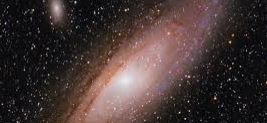Stars make up our universe, and the Sun, at the centre of our universe, is the largest star of all. It produces a large amount of energy that sustains life on Earth and energises the photovoltaic cells that Solar Panel Installation Portishead businesses like redbridgeandsons.co.uk/solar-pv-panels/solar-panel-installers-portishead can install. Stars journey through a lifecycle and each stage is described below.

Nebulae – this is the birth stage of a star and begins with a vast cloud of gas and dust. Gravitational forces cause the nebula to collapse in on themselves. This then creates a dense core.
Protostar – The core continues to contract in one itself, and as it heats up, it forms a protostar. This is the first phase of the star’s life.

Main Sequence – When the protostar reaches a stable equilibrium, it becomes a main-sequence. This phase can last billions of years and is the phase that the Sun is currently in. Nuclear fusion occurs at the star’s core.
Red Giant – All stars will eventually exhaust their hydrogen fuel. This leads to them expanding their outer layers and turns them into red giants. Stars like the Sun that are already large turn into supergiants.
Fusion of heavier elements – This is where helium fuses together heavier elements are created, and iron accumulates at the core of the star.
Supernova – Iron is the end of nuclear fusion, and it eventually reaches a critical mass that causes the star to explode.
White Dwarf – This is where the remnants of the supernova contract into a white dwarf. In the cases of large stars, it can turn into a neutron star or collapse into a black hole.
